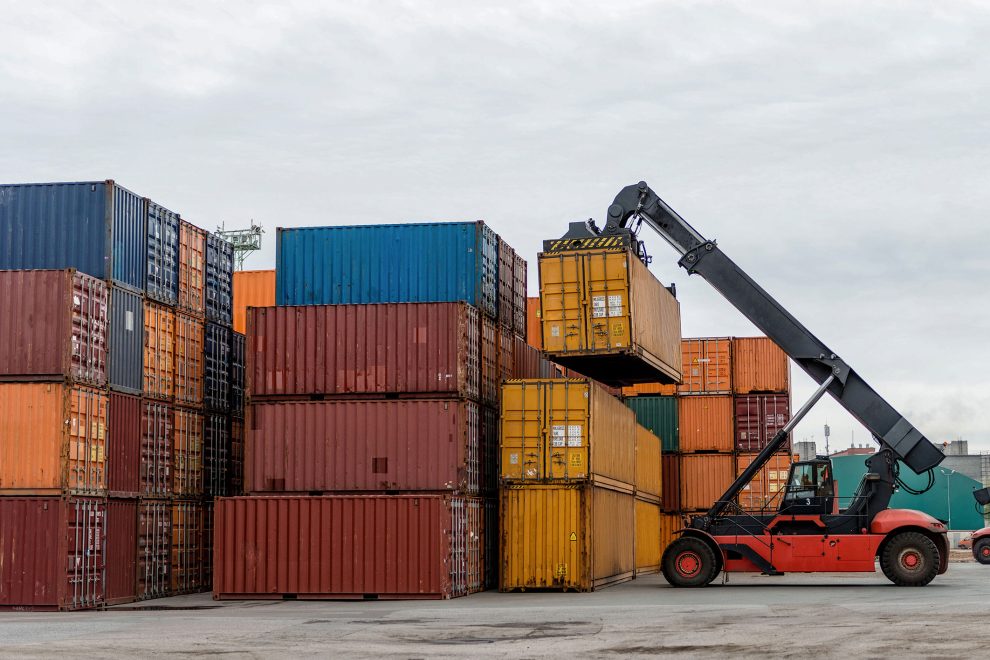
China container reservations to the United States fell 27% in the week began on April 28 compared to the same period last year, reaching the lowest level since February.
The data are from the Intelligence Company of the Vizion Supply Chain and reflect the direct effects of the recent tariffs imposed by the United States on Chinese products.
According to Vizion, the number of units equivalent to 20 feet (TEUs) reserved fell to 52,073, a sharp drop from 90,831 your recorded week – representing a weekly retraction of 42.7%, the largest this year.
According to the company, reservations act as a relevant indicator of Chinese export activity, and the reduction indicates impacts on global supply dynamics.
“The carriers hurried to transport the products in the first quarter, but then retreated abruptly when new tariff policies introduced widespread uncertainty,” Vizion pointed out in a report published this week. The company also stated that the current scenario represents “profound disturbances and changes in supply.”
Prior to the adoption of so -called reciprocal tariffs by the United States government, led by President Donald Trump, the weekly containers of China containers to the US came up above the 100,000 unit mark. At the beginning of the year, this volume reached the peak of 152,166 thus.
The new US tariffs have been implemented the previous month and since then the logistics flow between the two countries has shown significant variations. Vizion projects that instability will continue in the coming weeks.
“We expect continuous volatility in reserves in the coming weeks, driven by changing demand, temporary breaks and changes in commercial flows as global participants adjust to evolving policies,” he added.
According to the company, the new tariff context has led several logistics teams and supply chains to review schedules, inventory volumes and supply strategies. Uncertainty around the definition of future rate levels has added additional obstacles to export and import planning.
At the same time, authorities from China and the United States plan to meet in person in Switzerland this weekend to discuss the commercial situation between the two countries.
It will be the first meeting of this type since the intensification of commercial tensions at the beginning of the year. The meeting must deal with the rates in force and the impacts on bilateral exchanges.
As they prepare for negotiations, Chinese authorities have announced economic stimulation measures. The package was released on Wednesday and aims to mitigate the adverse effects of US tariffs on home economy.
The initiative was presented shortly after the Chinese government’s reaffirmation of the economic growth target of “about 5%” to the current year.
Measures include interest rates, credit expansion to small and medium -sized companies and incentives for exporters. Actions aimed at stabilization of capital markets were also announced.
China’s main financial regulators participated in the announcement and highlighted that the new set of policies seeks to preserve the country’s rhythm of economic growth in the face of an adverse external environment.
The coordinated performance between the regulatory bodies and the China People’s Bank aims to ensure sufficient liquidity and strengthen the productive sectors impacted by the new tariffs.
Foreign trade sector analysts indicate that the effects of Chinese measures on export volume and container reserves stability should still take a few weeks to be measured. The developments of negotiations in Switzerland define, at least in part, the direction of the upcoming logistics flows between the two largest economies in the world.
The commercial war between the United States and China, reactivated by the recent rise of tariffs, has affected productive chains in sectors such as technology, consumer goods, cars and raw materials. Companies involved in flows between the two countries continue to adjust their planning as new commercial policies are implemented.
If there is advancement in bilateral negotiations and eventual tariff review, export volumes and logistics reserve levels may stabilize or even resume previous levels. However, continuity of the current scenario can maintain pressure on US exporters and importers.
Source: https://www.ocafezinho.com/2025/05/07/reservas-de-conteineres-da-china-para-os-eua-caem-ao-menor-nivel-desde-fevereiro-apos-novas-tarifas/

